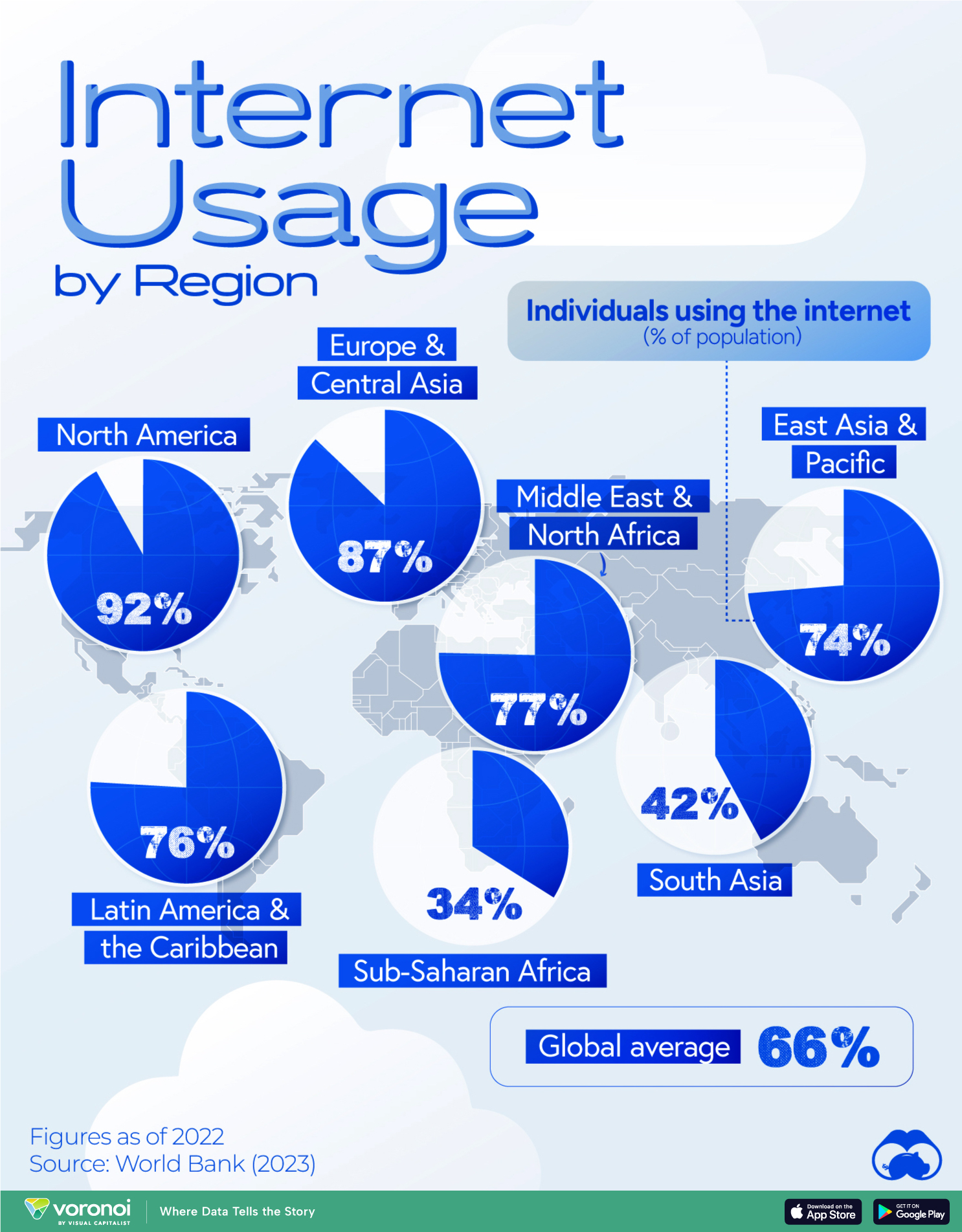![]()
See this visualization first on the Voronoi app.

Visualizing Internet Usage by Global Region
This was originally posted on our Voronoi app. Download the app for free on iOS or Android and discover incredible data-driven charts from a variety of trusted sources.
Digital technologies have become an integral part of our daily lives, transforming communications, business, health, education, and more. Yet, billions of people around the world are still offline, and digital advancement has been uneven.
Here, we map internet usage by region based on data from the World Bank’s Digital Progress and Trends Report 2023.
Digitalization Has Been Uneven
According to the World Bank, between 2018 and 2022, the world gained 1.5 billion new internet users.
In 2020 alone, the share of the global population using the internet increased by 6% (500 million people), marking the highest jump in history. India, in particular, has seen high rates of adoption. For example, in 2018, only 20% of Indians used the internet. By 2022, this percentage had grown to more than 50%.
| Region | Individuals using the internet (% of population) |
|---|---|
| East Asia & Pacific | 74 |
| Europe & Central Asia | 87 |
| Latin America & the Caribbean | 76 |
| Middle East & North Africa | 77 |
| North America | 92 |
| South Asia | 42 |
| Sub-Saharan Africa | 34 |
However, the progress of digitalization has been uneven both within and across countries.
In 2022, one-third of the global population remained offline, with parts of Asia and Africa still experiencing very low rates of internet usage. For instance, more than half of businesses in Burkina Faso, Ethiopia, Ghana, and Senegal reportedly lack internet connection.
According to the World Bank’s report, when fast internet becomes available, the probability of an individual being employed increases by up to 13%, and total employment per firm increases by up to 22%. Moreover, firm exports nearly quadruple with the availability of fast internet. Across Africa, 3G coverage has been associated with a reduction in extreme poverty, with reductions of 10% seen in Senegal and 4.3% in Nigeria.
Curious to learn more about the internet? Check out this animated chart that shows the most popular web browsers since 1994.
The post Visualizing Internet Usage by Global Region appeared first on Visual Capitalist.